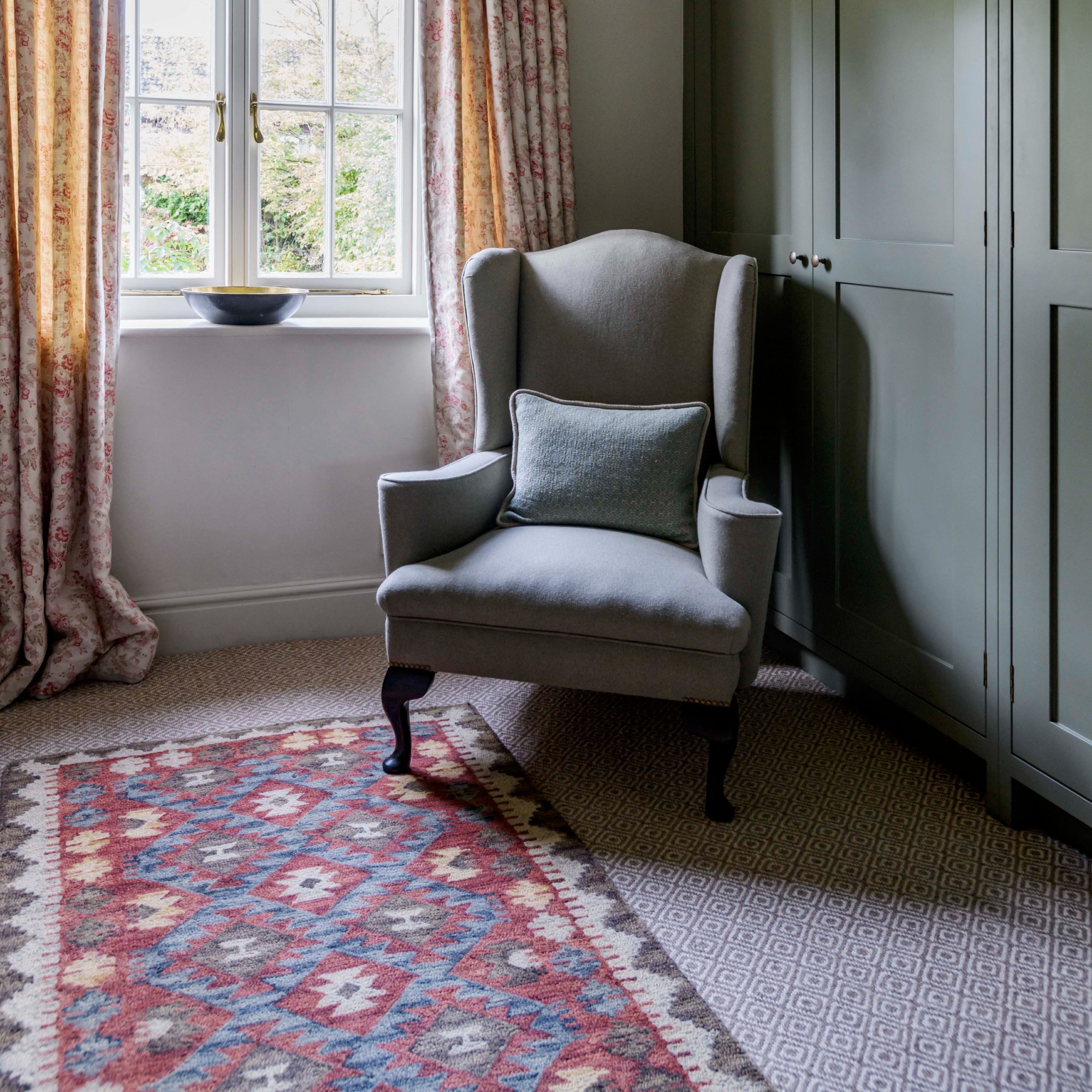5 things you should never clean with a steam cleaner - and what to use instead
Steam cleaning these things could result in serious damage


You know what they say; if you can’t stand the heat, then get out of the kitchen. But what about the areas of your house that can’t take the heat (or the steam) of a steam cleaner? Well, these are the things that you should never clean with a steam cleaner.
At Ideal Home, we know that the best steam cleaners can make a handy addition to your cleaning regime. There are countless things that you can clean with a steam cleaner - many of which we didn’t realise until recently. However, it’s also important to recognise that steam cleaning can be detrimental to certain areas of your home, no matter whether you opt for an upright steam cleaner mop or a handheld steam cleaner.
To help you keep your house shipshape, we’ve consulted with cleaning experts to unearth the things you should never clean with a steam cleaner. We’re not leaving you stranded, though. We’ve also got information on what you can use instead.
Things you should never clean with a steam cleaner
‘Steam cleaners are indeed powerful tools for chemical-free, deep cleaning, but it's crucial to be mindful of the surfaces they are applied to. The high temperatures, reaching up to 150 degrees Celsius, can cause damage to certain materials,’ explains a spokesperson at Nationwide Cleaning. Below are the five things you should never clean with a steam cleaner.
1. Wooden flooring

There are so many amazing flooring ideas out there, but if you want our opinion, there’s nothing quite like wooden flooring. Whether you’ve opted for wooden floor in your living room or have decked out your hallway in beautiful parquet flooring, it’s important to avoid any floor cleaning mistakes.
Natalie Mudd, Creative Director of The Wood Flooring Co., explains, ‘Steam cleaners are not advised for use on engineered wood floors. The moisture created by the steam cleaner and the change in temperature can have a huge impact on the planks, in some cases leading to discolouration and warping. It can also damage the surface finish of the board, which will impact the look and feel of the entire space.’
What to use instead:
Sign up to our newsletter for style inspiration, real homes, project and garden advice and shopping know-how
Knowing how to clean wooden floors properly is key to keeping them in tip-top condition, and to do this, you should swap out a steam cleaner for one of the best vacuum cleaners, microfibre cloths, and a specialised floor cleaner. You could also use a mop.
Nicola Rodriguez, AKA @essexhousedolly says, ‘Unfinished wood floors can't withstand the heat and moisture produced by a steam mop. I recommend you use a damp or spray mop instead.’
2. Large areas of carpet

We know you’re probably raising your eyebrows at this one, as many steam cleaners from big brands are marketed as carpet cleaners, too. While steam cleaners are certainly equipped to clean your carpet, they need to be used sparingly, and you should avoid steam cleaning large areas of carpet at the same time.
‘While steam cleaners can be used for spot cleaning on carpets, using them to clean large carpeted areas can leave the carpet too damp, leading to mould or mildew growth under the carpet,’ explains Ava Wilson, Chief Editor at Unclutterer.
So, it’s best to keep your carpet steam cleaning adventures to a minimum or opt for an alternative cleaning option.
What to use instead: There’s a big difference between a steam cleaner and the best carpet cleaners. While a steam cleaner uses both heat and steam at the same time, carpet cleaners generally separate these two functions - which means that you don’t need to worry about water seeping into the fibres and potentially causing mould or mildew problems in your home.
In fact, the ‘Best Overall’ steam cleaner in our guide is the Vax Platinum SmartWash Pet-Design Carpet Washer, which includes a hot air dry-only setting to remove as much moisture as possible from carpets.

Ava Wilson, Unclutterer’s Chief Editor with 25 years in cleaning, started with a mop and now leads a team of 20. Merging hands-on experience with management expertise, she transforms cleaning into inspiring lessons. Ava's eco-focused insights make Unclutterer a go-to for sustainable cleaning wisdom.
3. Walls painted in water-based paint

One of the best ways to clean skirting boards is to use a steam cleaner. The steam gets right into the nooks and crannies of your skirting, and it’s a quick and effective way to get this job done quickly.
You need to be careful when cleaning skirting boards, though. If you stray too far, you may accidentally start steaming your painted walls. This is especially dangerous if you’ve painted your walls in a water-based paint.
That’s because water-based paints are extremely sensitive to heat and will dry out when exposed to this heat. This could ultimately cause it to crack or peel, and you’ll have to work hard to fix it. It’s important to note that this is also the case if you’ve upcycled furniture and painted it in water-based paint.
What to use instead: If you’re looking to clean walls without removing paint, you’ll first need to dust your walls to get off any loose particles. Then, you can use warm water and washing-up liquid to tackle general scuffs and marks. If you have tougher stains that won’t come off this way, you can use white vinegar or make a paste from water and baking soda.
Sophie Smith at Zhoosh Paints also says, ‘Sometimes water is needed. In that instance, I would recommend warm, soapy water on a non-abrasive sponge, using circular motions to gently rub the mark. A top tip is to add a little fabric conditioner, as it cleans paint well and leaves a lovely smell!’
4. Delicate fabrics

If you’re looking to clean your silk curtains or your velvet sofa, you should keep the steam as far away from this delicate fabric as you can.
Ava says, ‘Delicate fabrics such as silk, thin plastics, and velour upholstery can be damaged by the high heat of steam cleaning. The heat can cause shrinkage, warping, or discolouration.’
Unfortunately, leather sofas also fall under that category. ‘The heat and moisture from steam cleaning can damage leather surfaces, causing them to become discoloured, dry out, crack, or warp,' adds Ava.
What to use instead: Well, this all depends on what you’re trying to clean. If you want to clean your curtains, using a vacuum to suck up the dust and debris should be enough to breathe new life into them. If that doesn’t work, you could try handwashing them to preserve the delicate nature of the fabric.
Similarly, cleaning a sofa also requires some hands-on attention - especially if it's leather. To clean a leather sofa, focus on vacuuming up loose crumbs or dirt, and then use a specialist leather cleaner to tackle marks or scuffs.
5. Electrical devices

One of the first things we learned in science lessons is that water and electricity don’t mix, and that’s why you need to be careful when using a steam cleaner around electrical devices.
Of course, that’s not to say that they can’t be used at all. You can use a steam cleaner to clean a fridge (specifically to break down dirt and grime on the interior shelves), and you can even use a steam cleaner to clean your oven. However, Ava has issued a warning to those using this appliance near electrics.
‘Never use a steam cleaner around electrical outlets, switches, or devices. The moisture can lead to electrical shocks, short circuits, or device damage,’ she says.
In essence, you should never use a steam cleaner on or near smaller electrical devices and appliances like kettles and toasters. These tend to have shorter cables and are regularly unplugged. It’s just not worth the risk - to yourself or the appliance.
In fact, that’s why putting your kettle by the sink is one of the worst places to put a kettle in your kitchen.
What to use instead: If a steam cleaner is out of the question, what should you use instead? Well, our guide on how to clean a toaster will give you all of the information you need to know on how to clean this appliance safely, and it’s safe to say that there’s no steam cleaner involved. Instead, you’ll need microfibre cloths, white vinegar, and washing-up liquid for this task.
You’ll need similar products if you’re looking to clean your kettle, but you’ll be happy to know that you don’t need to use any harsh chemicals to clean these electrical devices.
FAQs
What fabric should not be steam cleaned?
You should avoid steam-cleaning delicate fabrics such as silk, velvet, lace, and thin plastics if you want to keep them in tip-top condition. As these fabrics are so thin and delicate, they struggle to cope with the intense heat and steam that’s produced by the steam cleaner.
So, opt for hand-washing these fabrics instead.
What floors should not be steam cleaned?
Wooden flooring should never be steamed, as the planks will struggle to deal with the change in temperature and moisture. This can lead to surface damage, warping, and discolouration.
However, that’s not the only floor that shouldn’t be steam cleaned. Solid wood, laminate and vinyl floors are also susceptible to warping and moisture build-up when exposed to this heat and steam.
Can you clean everything with a steam cleaner?
No, definitely not. While there are so many things that you can clean with a steam cleaner, it’s also important to remember that steam cleaning involves high temperatures and excess moisture.
Fabrics and materials such as wood, water-based paints, carpets, and silk curtains can’t cope with this type of environment and may be damaged in the process.
Of course, we’re still going to use our steam cleaners on a regular basis - but there’s no doubt that we’re going to be more cautious now.

Lauren Bradbury has been the Content Editor for the House Manual section since January 2025 but worked with the team as a freelancer for a year and a half before that. She graduated with a Bachelor’s degree in English and Creative Writing from the University of Chichester in 2016. Then, she dipped her toe into the world of content writing, primarily focusing on home content. After years of agency work, she decided to take the plunge and become a full-time freelancer for online publications, including Real Homes and Ideal Home, before taking on this permanent role. Now, she spends her days searching for the best decluttering and cleaning hacks and creating handy how-to guides for homeowners and renters alike, as well as testing vacuums as part of her role as the Ideal Home Certified Expert in Training on Vacuums, having spent over 110 hours testing different vacuum models to date!